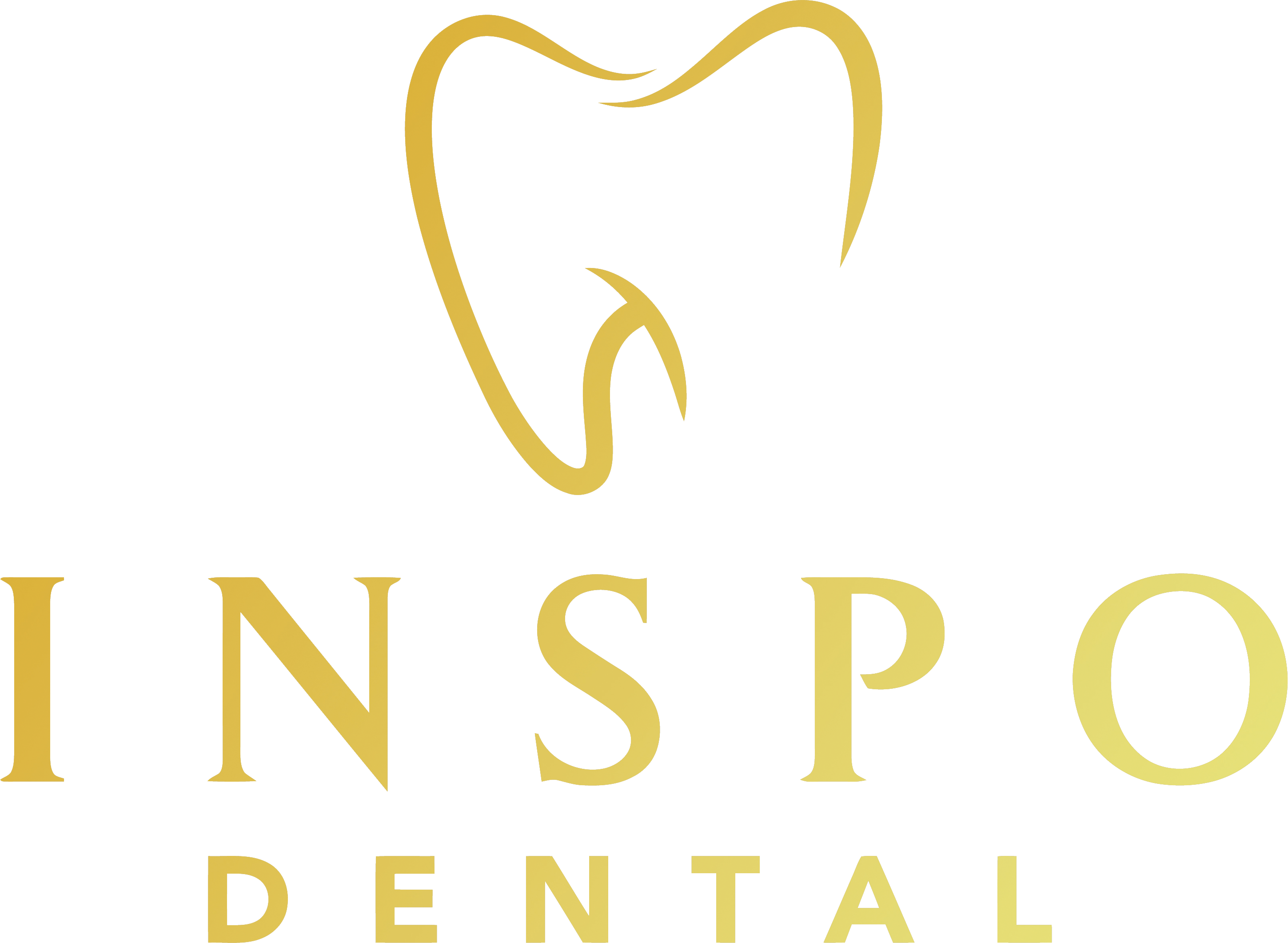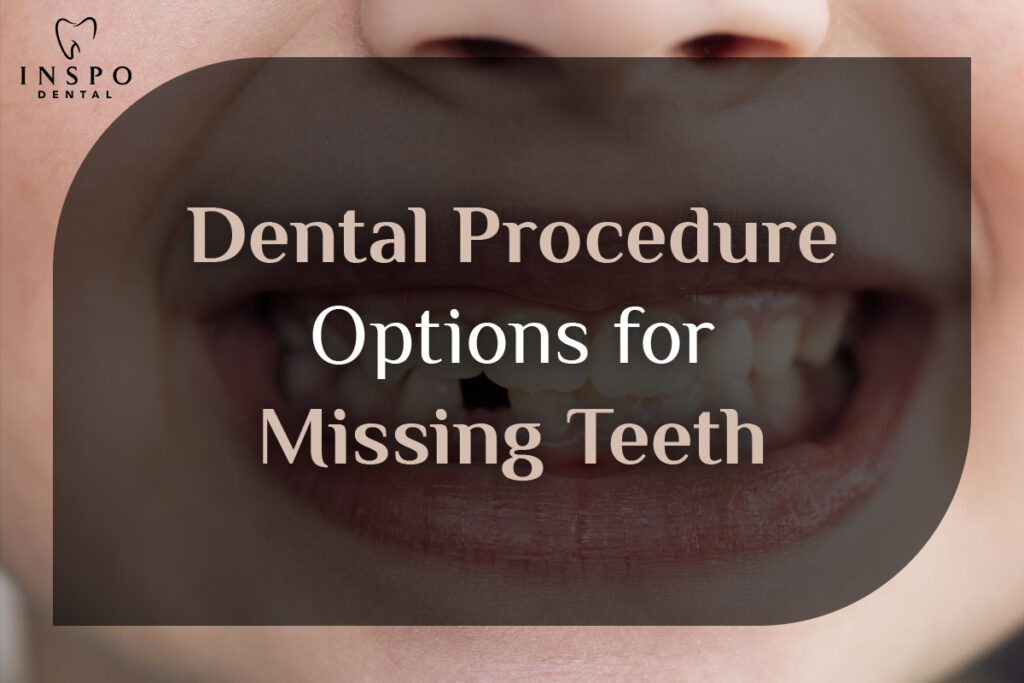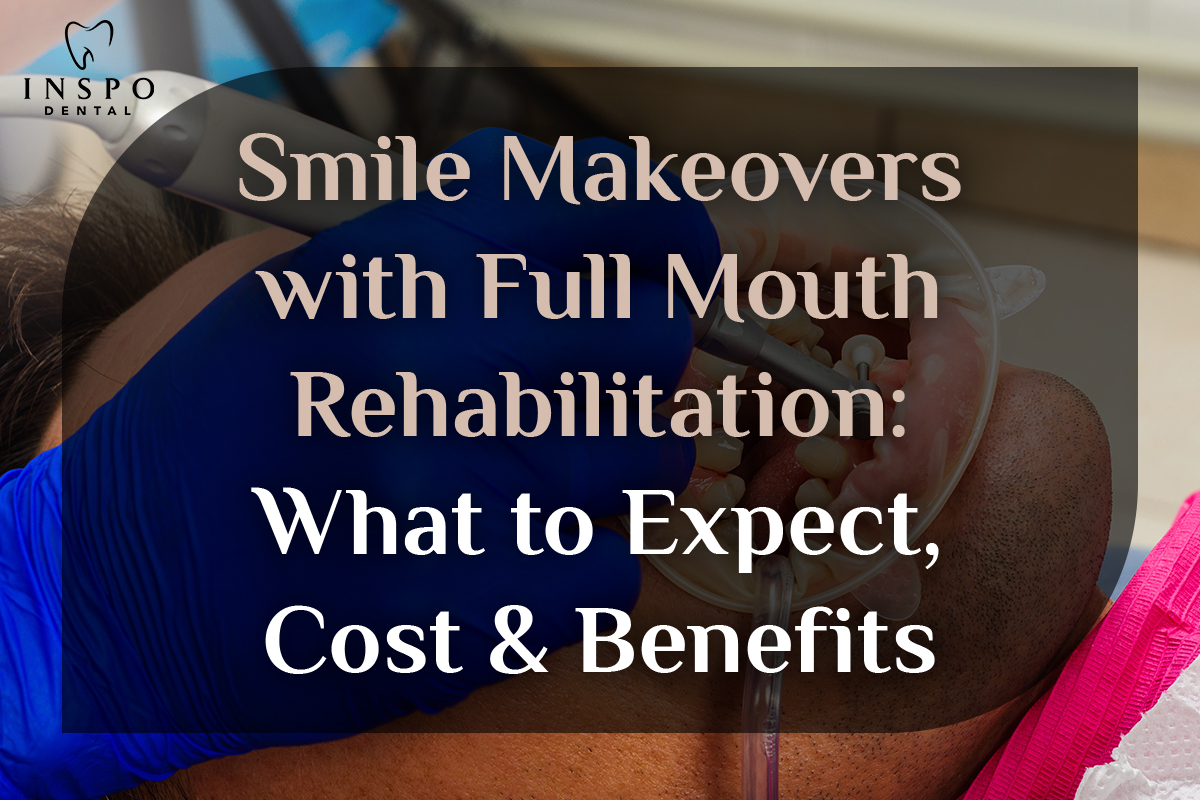When dealing with missing teeth, there are several dental procedure options available, each catering to different needs and preferences. Here are the most common solutions:
- Dental Implants
- Procedure: Dental implants involve surgically placing a titanium post into the jawbone, which acts as a root for a replacement tooth or crown. The post fuses with the bone over time in a process called osseointegration.
- Advantages: Implants are durable, look and feel like natural teeth, and help maintain jawbone structure by preventing bone loss. They do not affect neighboring teeth and have a high success rate.
- Considerations: Implants require sufficient bone density and may involve a longer healing process. Costs can be higher than other options, and some people may require bone grafting before placement.
- Ideal Candidates: Those with one or more missing teeth and good overall oral health.
- Dental Bridges
- Procedure: A bridge involves placing a prosthetic tooth (or teeth) anchored by crowns on adjacent healthy teeth. In the case of an implant-supported bridge, implants may be used to hold the bridge in place.
- Advantages: Bridges are less invasive than implants and can replace multiple missing teeth in a row. They restore functionality and aesthetics efficiently.
- Considerations: Traditional bridges require reshaping adjacent teeth to hold the crowns, which can weaken those teeth over time. They also do not stimulate the jawbone, which could lead to bone loss.
- Ideal Candidates: Those missing one or more teeth with healthy adjacent teeth for support.
- Partial Dentures
- Procedure: Partial dentures consist of a removable appliance that fits into the mouth, replacing one or several missing teeth. They are attached to natural teeth using metal clasps or precision attachments.
- Advantages: They are more affordable than implants or bridges and can be removed for cleaning. Modern dentures are designed to be more comfortable and natural-looking.
- Considerations: Partial dentures may not be as stable as implants or bridges, can cause slight discomfort, and may need periodic adjustments or replacements over time.
- Ideal Candidates: Those seeking a cost-effective, non-permanent solution for missing teeth.
- Complete Dentures
- Procedure: Complete dentures are full-arch prosthetic devices used when all teeth in the upper or lower jaw (or both) are missing. They rest on the gums and may require adhesives to keep them secure.
- Advantages: They are an affordable and effective way to replace a full arch of missing teeth. Modern dentures are more comfortable, with better-fitting materials available.
- Considerations: Dentures can take time to adjust to, may affect speech and eating initially, and need regular maintenance. Bone loss in the jaw may occur over time due to the lack of tooth roots.
- Ideal Candidates: Individuals missing all teeth in the upper or lower jaw.
- Implant-Supported Dentures
- Procedure: A hybrid of dentures and implants, these dentures are secured by a few strategically placed implants, offering more stability than traditional dentures.
- Advantages: They provide better stability and chewing efficiency than traditional dentures. Implant-supported dentures help prevent bone loss and feel more secure.
- Considerations: This option is more expensive and involves a surgical procedure, but the results are more permanent and comfortable than traditional dentures.
- Ideal Candidates: Those seeking a more permanent solution than traditional dentures and who have sufficient bone density for implants.
- Resin-Bonded Bridge (Maryland Bridge)
- Procedure: This type of bridge is minimally invasive and uses a metal or porcelain framework bonded to the back of adjacent teeth. It involves minimal preparation and does not require reshaping of adjacent teeth.
- Advantages: It preserves the integrity of neighboring teeth, is less invasive than a traditional bridge, and is a good option for replacing front teeth.
- Considerations: It is not as durable or strong as other options, and may not be suitable for areas with high chewing forces, like molars.
- Ideal Candidates: Individuals needing a replacement for a front tooth and who want a minimally invasive option.
- Bone Grafting (for Implants)
- Procedure: Bone grafting is a preparatory procedure for dental implants when the jawbone lacks sufficient density to support the implant. The graft material (natural or synthetic) helps rebuild and strengthen the bone.
- Advantages: This procedure makes it possible to receive dental implants even when there is bone loss, ensuring long-term success for the implant.
- Considerations: Bone grafting requires additional healing time, increasing the overall length of the dental implant process. It can also add to the cost of the treatment.
- Ideal Candidates: Those who have experienced bone loss in the jaw due to prolonged tooth loss or other dental issues.
- All-on-4 Dental Implants
- Procedure: The All-on-4 system is a type of implant-supported denture where only four implants are strategically placed in the jaw to support a full arch of prosthetic teeth. These implants provide a strong foundation for a fixed denture that cannot be removed by the patient.
- Advantages: This procedure offers a permanent solution to missing teeth and can often be completed in one day, making it a “teeth in a day” option. It’s also more cost-effective than placing an individual implant for each missing tooth, while still providing the benefits of a stable, secure prosthesis that functions like natural teeth.
- Considerations: The upfront cost is higher than traditional dentures or partials, and the surgery requires sufficient bone structure in the jaw. Recovery time may also vary depending on the patient’s bone condition.
- Ideal Candidates: Patients missing most or all of their teeth in a jaw and who want a permanent, non-removable solution that offers excellent functionality.
- Removable Partial Dentures (RPD)
- Procedure: Removable partial dentures consist of replacement teeth attached to a gum-colored plastic base, connected by a metal framework that clips onto adjacent natural teeth. This provides an option for replacing a few missing teeth, particularly when surrounding teeth are healthy.
- Advantages: RPDs are more affordable than fixed options like bridges or implants, and they are easy to remove and clean. They also help maintain the structure of the mouth by keeping teeth from shifting into the gaps left by missing teeth.
- Considerations: Removable partials may not be as stable as fixed options and can be uncomfortable at first. They also require regular adjustments over time and may not provide the same level of aesthetic appeal or natural feel as permanent solutions.
- Ideal Candidates: Patients missing several teeth who are seeking an affordable, non-permanent solution that allows for easy removal and cleaning.
- Flipper Dentures
- Procedure: A flipper denture is a temporary, removable appliance that fills in gaps where teeth are missing. It’s usually made of acrylic and is used as a short-term solution while waiting for a more permanent option like an implant or bridge.
- Advantages: Flippers are lightweight, affordable, and provide a quick solution for aesthetic purposes while longer-term treatments are being prepared. They can be easily removed for cleaning, and the procedure for creating a flipper is non-invasive.
- Considerations: Since flippers are meant to be a temporary solution, they are not as durable or stable as permanent options. They can also be uncomfortable and may affect speech and chewing ability.
- Ideal Candidates: Patients who are waiting for dental implants or bridges and need a temporary solution to maintain appearance.
- Snap-In Dentures
- Procedure: Snap-in dentures are similar to traditional dentures but are secured in place by dental implants. The dentures “snap” onto the implants, providing more stability than regular removable dentures.
- Advantages: These dentures are more secure than traditional ones, allowing for better chewing and speaking without the need for adhesives. They are also removable, making them easier to clean compared to fixed implant-supported options.
- Considerations: Snap-in dentures require dental implant surgery, which can be more invasive and costly than regular dentures. There is also a period of healing after the implants are placed before the dentures can be snapped in.
- Ideal Candidates: Individuals who want the security of implants but also prefer removable dentures for cleaning and maintenance.
- Teeth-in-a-Day (Immediate Load Implants)
- Procedure: Teeth-in-a-Day is a treatment that allows for dental implants and the replacement teeth to be placed on the same day. After placing the implant, a temporary prosthesis is attached, allowing the patient to leave the office with functional teeth while the implants heal.
- Advantages: Immediate load implants reduce the time patients spend without teeth and offer a quick solution that improves function and appearance immediately after surgery. They are also ideal for people who need to replace a full arch of teeth in a short timeframe.
- Considerations: Not all patients are candidates for this procedure; sufficient bone density is required for the immediate placement of the teeth. Additionally, the patient will need to transition to a permanent prosthesis after the healing process is complete.
- Ideal Candidates: Patients with good bone density who need quick tooth replacement and do not want to undergo multiple surgeries.
- Cantilever Bridges
- Procedure: Cantilever bridges are similar to traditional dental bridges but involve anchoring the prosthetic tooth to only one adjacent tooth rather than two. This type of bridge is ideal for areas with less bite pressure, such as the front teeth.
- Advantages: This solution avoids the need to crown two healthy teeth, preserving more of the natural tooth structure. It is a faster and less invasive option compared to implants or traditional bridges.
- Considerations: Cantilever bridges are generally less stable than other types of bridges since they rely on a single tooth for support. This option might not be suitable for molars or areas with significant chewing pressure as it may cause undue strain on the anchoring tooth.
- Ideal Candidates: Individuals with missing front teeth and a healthy adjacent tooth that can support the bridge.
- Mini Dental Implants
- Procedure: Mini implants are smaller in diameter than traditional dental implants and are used primarily to stabilize dentures or replace smaller teeth. The procedure is less invasive, and the implants can be placed without the need for major surgery or bone grafting.
- Advantages: Mini implants involve a faster and less complicated procedure compared to full-size implants. Recovery time is shorter, and the costs are typically lower. They are often used to secure dentures more effectively.
- Considerations: Mini implants may not be suitable for replacing large or heavily used teeth, as they do not offer the same level of stability as full-sized implants. They may also have a shorter lifespan.
- Ideal Candidates: Patients with insufficient bone density for full implants or those looking for a more affordable solution to stabilize dentures.
- Immediate Dentures
- Procedure: Immediate dentures are placed immediately after tooth extraction. They are a temporary solution that allows the patient to have teeth while the gums heal and before receiving a permanent set of dentures.
- Advantages: Immediate dentures provide an instant replacement for missing teeth, allowing patients to avoid a period without teeth. They can also protect the gums during the healing process.
- Considerations: Since immediate dentures are made before the gums have fully healed, they may require adjustments as the gums shrink. Eventually, a permanent set of dentures or another solution may be needed after the healing process is complete.
- Ideal Candidates: Patients needing an immediate solution after tooth extraction who do not want to be without teeth during the healing phase.
- Zygomatic Implants
- Procedure: Zygomatic implants are a type of dental implant anchored in the cheekbone (zygoma) rather than the jawbone. This technique is used when the upper jaw has experienced significant bone loss, and traditional implants are not feasible without bone grafting.
- Advantages: Zygomatic implants provide a solution for patients with severe bone loss in the upper jaw, eliminating the need for complex bone grafts. The procedure allows for quicker placement of implants, often in conjunction with immediate load prosthetics.
- Considerations: This is a more complex surgical procedure and may require a specialized oral surgeon. While highly effective, it may not be necessary for patients with adequate bone in the jaw.
- Ideal Candidates: Patients with severe upper jaw bone loss who want to avoid the lengthy process of bone grafting but still desire the benefits of implants.
- Overdentures
- Procedure: Overdentures are removable dentures that fit over remaining natural teeth or dental implants. These natural teeth or implants provide additional stability for the dentures.
- Advantages: Overdentures offer better stability than traditional dentures, improving chewing and comfort. The retention of natural teeth or use of implants helps preserve the jawbone, reducing bone loss over time.
- Considerations: Overdentures require healthy remaining teeth or implants to anchor them. They may also need more maintenance than fixed dentures or bridges.
- Ideal Candidates: Patients with a few remaining natural teeth or those who have dental implants and are looking for a more stable alternative to traditional dentures.
- Temporary Bridges
- Procedure: Temporary bridges are designed to serve as a short-term solution while patients wait for a permanent prosthetic, such as an implant or fixed bridge, to be completed. They are typically used after tooth extraction or during the healing period post-implant surgery.
- Advantages: Temporary bridges ensure that patients maintain functionality and appearance during the healing period. They also protect the exposed gum and teeth until a more permanent option is ready.
- Considerations: As temporary solutions, these bridges are not as durable as permanent options. They may require careful handling to avoid breakage or dislodging.
- Ideal Candidates: Patients undergoing a multi-step dental restoration process who need a temporary solution to maintain their smile and oral function.
- Hybrid Dentures (Fixed-Removable Dentures)
- Procedure: Hybrid dentures are a cross between fixed and removable dentures, providing the durability of fixed dentures but with the convenience of being removable for cleaning. These are anchored by dental implants, giving them superior stability compared to traditional dentures.
- Advantages: Hybrid dentures are more stable than regular dentures, improving chewing ability and speech. They offer better comfort and reduced slippage while allowing for easy maintenance since they can be removed for cleaning.
- Considerations: This option requires implant surgery, which can be more invasive and costly. There is also a waiting period for the gums to heal before the final prosthesis is fitted.
- Ideal Candidates: Patients who want a more permanent, stable solution than regular dentures but still prefer the convenience of a removable prosthetic for easy cleaning.
- Sinus Lift (for Upper Jaw Implants)
- Procedure: A sinus lift is a surgical procedure to add bone to the upper jaw in the area of the molars and premolars. It’s often done when there isn’t enough bone height in the upper jaw or when the sinuses are too close to the jaw, making traditional implants difficult.
- Advantages: This procedure creates a strong foundation for implants by increasing bone density in the upper jaw, allowing patients to receive implants even if they have bone loss. It enhances the long-term stability of dental implants.
- Considerations: A sinus lift is a more invasive procedure that involves a longer recovery time, as the new bone needs to integrate with the existing bone before implants can be placed. It also adds to the overall cost and timeline of receiving dental implants.
- Ideal Candidates: Patients with insufficient bone height in the upper jaw or those whose sinuses are too close to the jawbone, making implant placement otherwise difficult.
- 3D Printed Dental Implants
- Procedure: 3D printing technology is increasingly being used in the dental field to create custom dental implants and prosthetics. This technology allows for precise customization based on the patient’s oral structure, creating a perfect fit for implants or crowns.
- Advantages: 3D-printed implants offer high accuracy, leading to a better fit and faster recovery. The process can be more efficient, reducing the time from design to placement. It also allows for more personalized prosthetic solutions, whether for a single tooth or full mouth restoration.
- Considerations: While 3D printing is becoming more widespread, it may not be available in all dental offices. It could also come with higher upfront costs depending on the complexity of the case.
- Ideal Candidates: Patients who require highly customized dental solutions and want to benefit from faster and more precise implant placements.
- Stem Cell Therapy for Tooth Regeneration (Emerging Technology)
- Procedure: Stem cell research in dentistry is an emerging field, exploring the possibility of regenerating missing teeth using the patient’s own stem cells. Though not yet widely available, this procedure holds the promise of growing new teeth to replace lost ones naturally.
- Advantages: If fully developed, this technology could eliminate the need for prosthetics, implants, or bridges, as patients could regrow their own teeth. It would also reduce the need for invasive surgery and improve long-term outcomes.
- Considerations: This technology is still in the experimental stages, with significant advancements needed before it becomes commercially available. Costs and availability are unknown at this time.
- Ideal Candidates: In the future, this procedure may be suitable for patients looking for natural tooth replacement options without the need for implants or prosthetics.
- Full Arch Fixed Bridges
- Procedure: This option involves placing multiple dental implants in the jaw and attaching a full arch of prosthetic teeth. Unlike traditional dentures, a full arch fixed bridge is permanently secured and functions much like natural teeth.
- Advantages: Full arch fixed bridges are a permanent solution for those missing all teeth in a jaw. They provide superior stability compared to dentures and allow patients to eat, speak, and smile confidently without fear of slippage.
- Considerations: The procedure is more invasive and costly compared to dentures, as it requires multiple implants and may involve preparatory surgeries like bone grafts. Recovery time is also longer.
- Ideal Candidates: Patients who have lost most or all of their teeth in a jaw and are looking for a long-term, stable, and fixed solution.
- Temporary Implant Bridges
- Procedure: For patients awaiting a permanent implant solution, temporary bridges can be used to maintain function and aesthetics. These temporary bridges are supported by the implants until the final restoration is ready.
- Advantages: They allow patients to have a functional smile while waiting for the permanent solution. Temporary implant bridges protect the surgical site and help with speech and chewing during the healing process.
- Considerations: Temporary solutions are not as durable or strong as permanent implants, and they may need adjustments over time. Eventually, they will be replaced by a permanent bridge.
- Ideal Candidates: Patients undergoing multi-step implant procedures who need an interim solution while their permanent implants heal.
The options for replacing missing teeth have evolved significantly, offering a wide range of solutions that cater to different needs and preferences. Whether patients opt for permanent implants, bridges, dentures, or emerging technologies like 3D printing and stem cell therapy, the choice depends on various factors such as oral health, budget, and personal goals. Consulting with a dental professional is essential to determine the best option, ensuring the restoration is functional, durable, and aesthetically pleasing. The future of dental care holds exciting possibilities, with innovations such as 3D-printed implants and tooth regeneration poised to revolutionize treatment for missing teeth.






